Hundred Deer Scroll (百禄图卷)
A Ming Dynasty Masterpiece of Auspicious Symbolism (c. 15th–16th Century)
Overview
Painted by an anonymous Ming court artist during the mid-Ming period (likely 15th–16th century), this silk scroll (45.6 cm × 290 cm) captures the harmony between nature and imperial ideology through meticulously rendered landscapes and symbolic motifs. Now housed in the National Palace Museum, Taipei, the work exemplifies the Ming court’s fascination with auspicious themes and refined gongbi (工笔, “meticulous brush”) techniques.
Content & Symbolism
- Landscape and Deer
- The scroll unfolds as a panoramic mountain vista with cascading waterfalls, pine-clad cliffs, and rocky shores. Over 100 deer—grazing, resting, or frolicking—animate the scene. Their lifelike poses reflect Ming naturalism, while their sheer number embodies the title’s pun: “百禄” (Bai Lu, “Hundred Deer”) homophonically signifies “hundreds of official salaries” (禄, lu), a metaphor for career success and imperial favor.
- A rare white deer, considered an omen of divine favor (祥瑞), stands prominently, referencing legendary qilin (麒麟) mythology.
- Herb-Gathering Boys
- Groups of herb-gathering boys (采芝童子) traverse the mountainsides. Clad in leaf-patterned robes and bamboo hats, they carry baskets and hoes, symbolizing the Daoist pursuit of longevity through medicinal plants like lingzhi (灵芝, “immortality mushroom”). This motif aligns with Ming imperial interests in alchemy and health preservation.
Artistic Techniques
- Brushwork: Delicate ink outlines and mineral pigments (e.g., malachite green, azurite blue) define the deer’s fur and landscape textures, showcasing the Ming court’s technical precision.
- Composition: The “axe-cut” (斧劈皴) texture strokes on cliffs echo Song dynasty traditions, while the balanced distribution of deer and figures reflects Ming aesthetic ideals of order and prosperity.
Cultural Context
- Deer Symbolism: In Chinese culture, deer represent longevity, nobility, and cosmic harmony. Their association with the God of Longevity (寿星) and the lu (禄) homophone made them a favored subject in imperial art.
- Ming Court Patronage: Commissioned works like this scroll served dual purposes: glorifying imperial virtue and encoding political messages (e.g., the white deer as a legitimizing symbol of divine mandate).
Translation with Annotations
Original Chinese Text
此《百禄图》卷由明代宫廷画家绘。画卷描绘了山峦叠嶂、瀑布溪流的景象,松石掩映的岸边,群鹿或奔跑嬉戏,或觅食小憩,各有神态。其中,几组采芝童子肩披叶裳,手提竹篓,负锄行走于山间。整幅画充满吉祥的寓意。此卷现藏于台北故宫博物院。鹿在我国古代被认为是长寿之仙兽,鹿与禄谐音,寓意吉祥,是相当受欢迎的画题。故题名「百祿」。其中还点缀了罕见的白鹿,寓意祥瑞。此卷虽无名款,从其用笔细腻,主题与画风来看,应为明代中期宫廷画家所作。
English Translation with Cultural Notes
“The Hundred Deer Scroll”
Painted by a Ming court artist, this scroll depicts a mountainous landscape with cascading waterfalls and pine-covered rocks. Along the banks, herds of deer—some galloping, others resting—display vivid expressions. Interspersed among them are groups of herb-gathering boys wearing leaf-patterned robes, carrying bamboo baskets and hoes, symbolizing the pursuit of immortality through medicinal plants. The work radiates auspicious symbolism:
- Deer (鹿, lu): Homophone for “official salary” (禄), representing career success and imperial favor.
- White Deer: A rare motif symbolizing divine blessings (祥瑞), akin to the mythical qilin.
- Boys and Lingzhi: Reflect Ming Daoist beliefs in longevity and alchemy.
Though unsigned, its delicate brushwork and thematic alignment with mid-Ming court aesthetics suggest it was created by a palace workshop master. Currently housed in Taipei’s National Palace Museum, the scroll exemplifies the fusion of naturalism and political allegory in imperial art.
Viewing Guide for Western Audiences
- Zoom-In Tip: Observe the white deer’s ethereal rendering—its golden antlers and pearl-like eyes distinguish it as a celestial being.
- Comparative Art: Similar deer motifs appear in Qing dynasty “Spring Festival” scrolls (e.g., Ding Guanpeng’s works), but Ming examples prioritize symbolic density over perspectival realism.

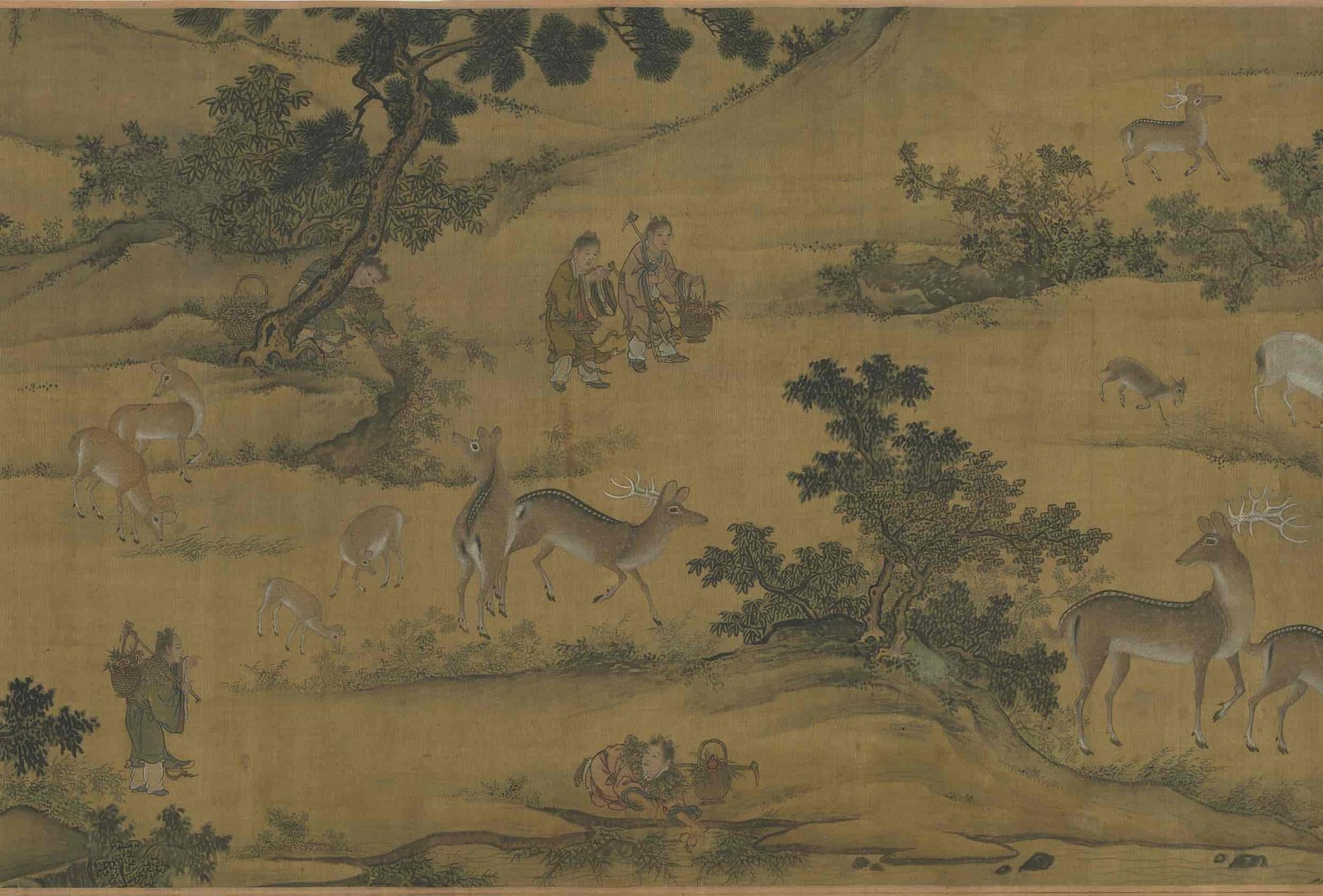
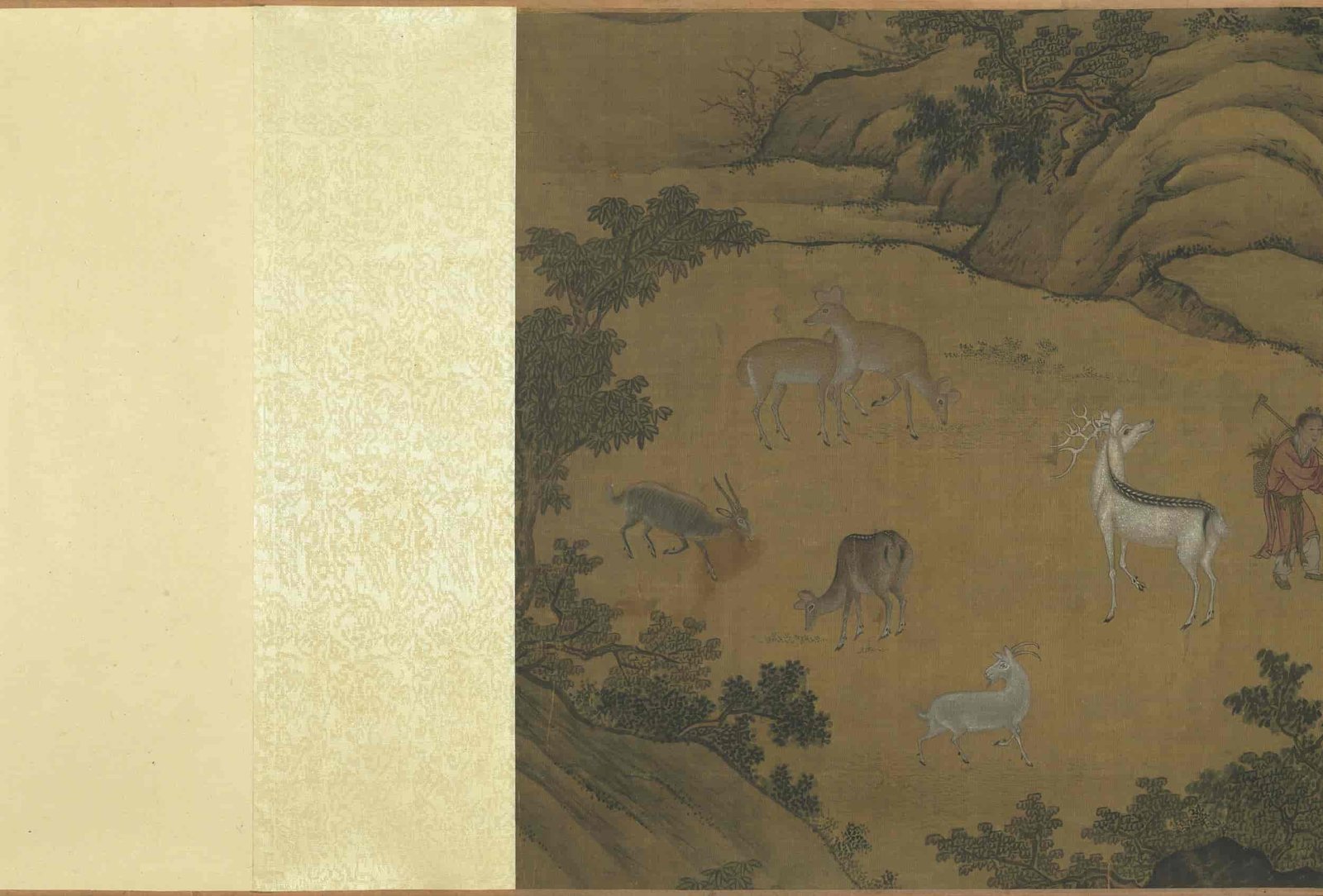
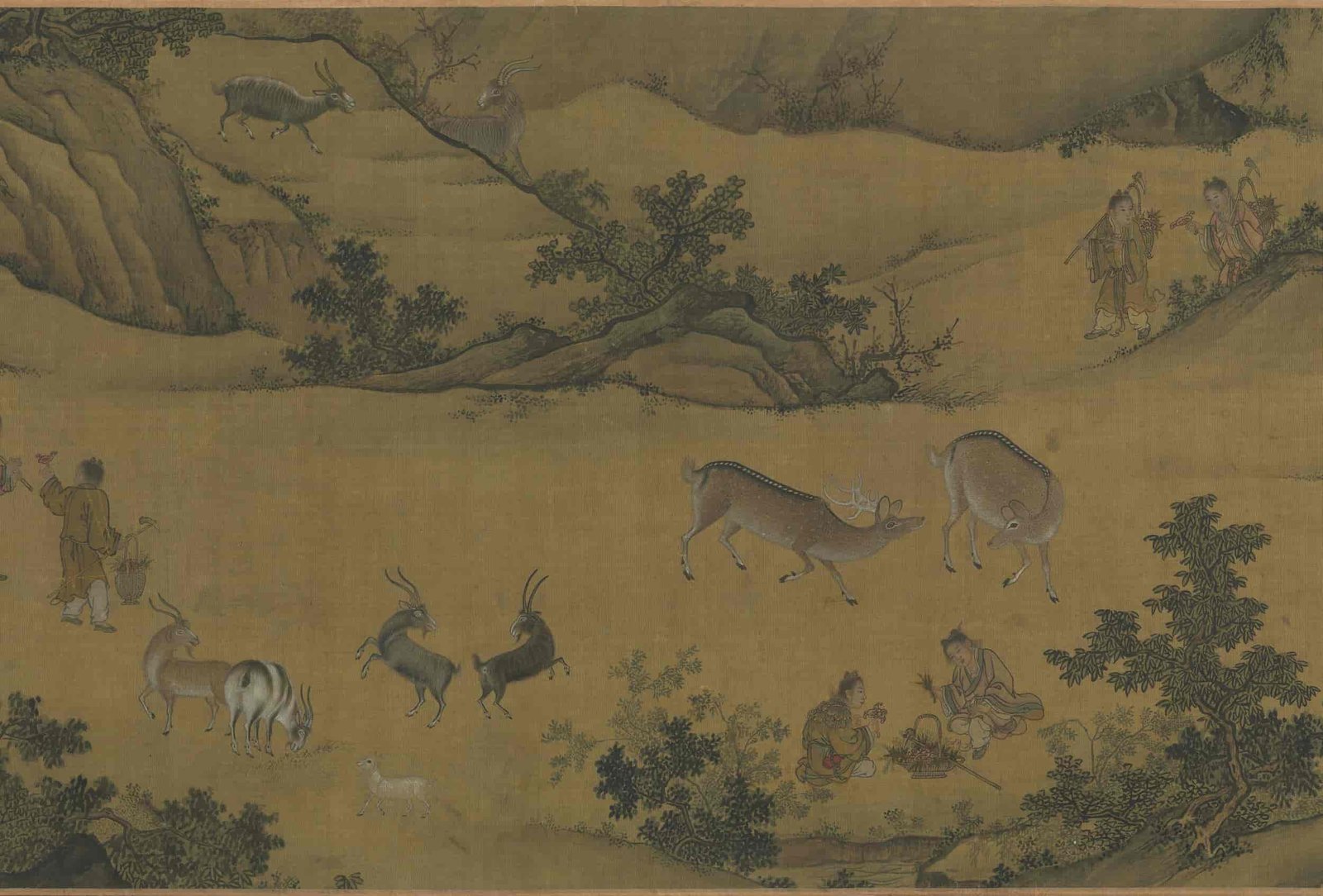
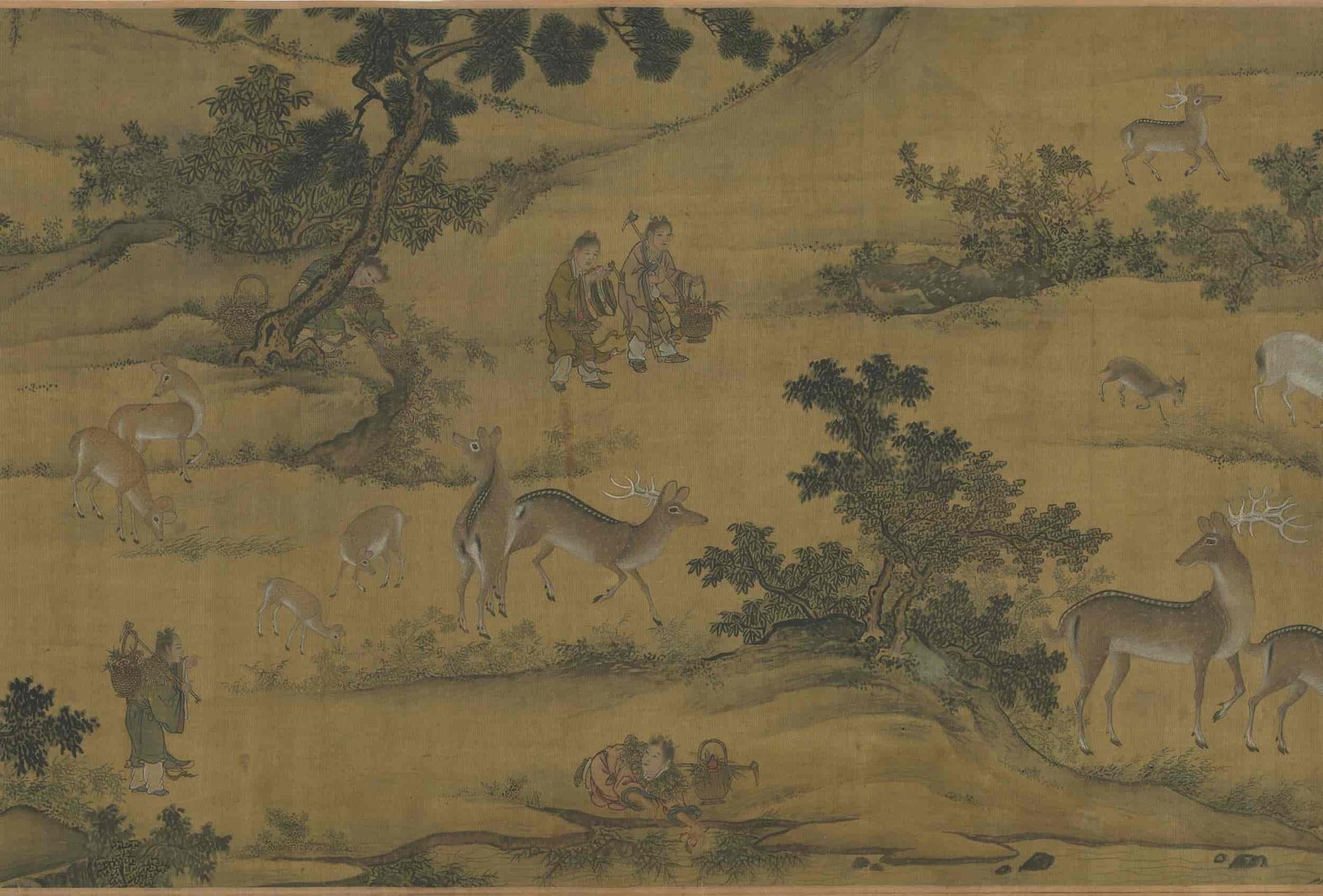
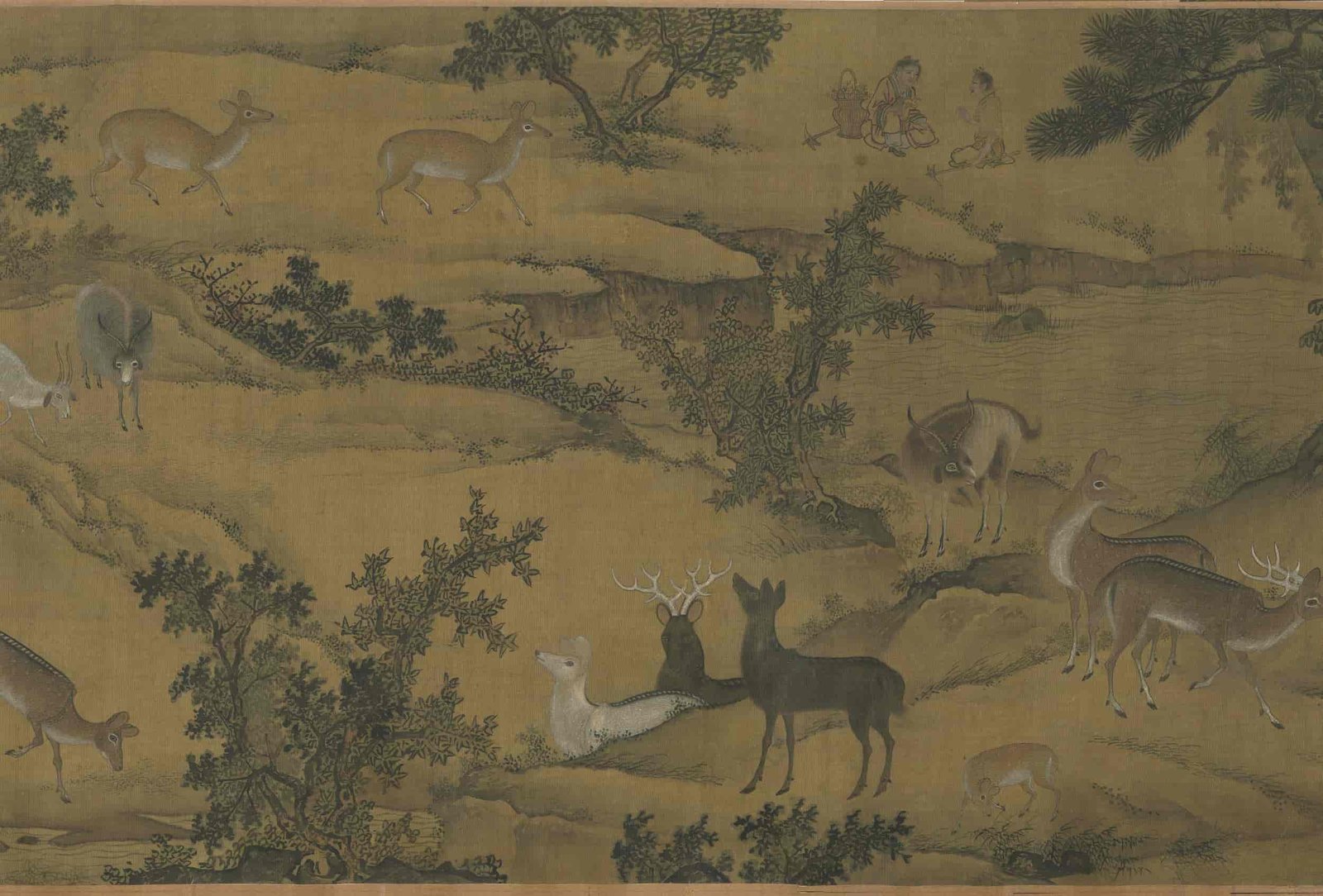
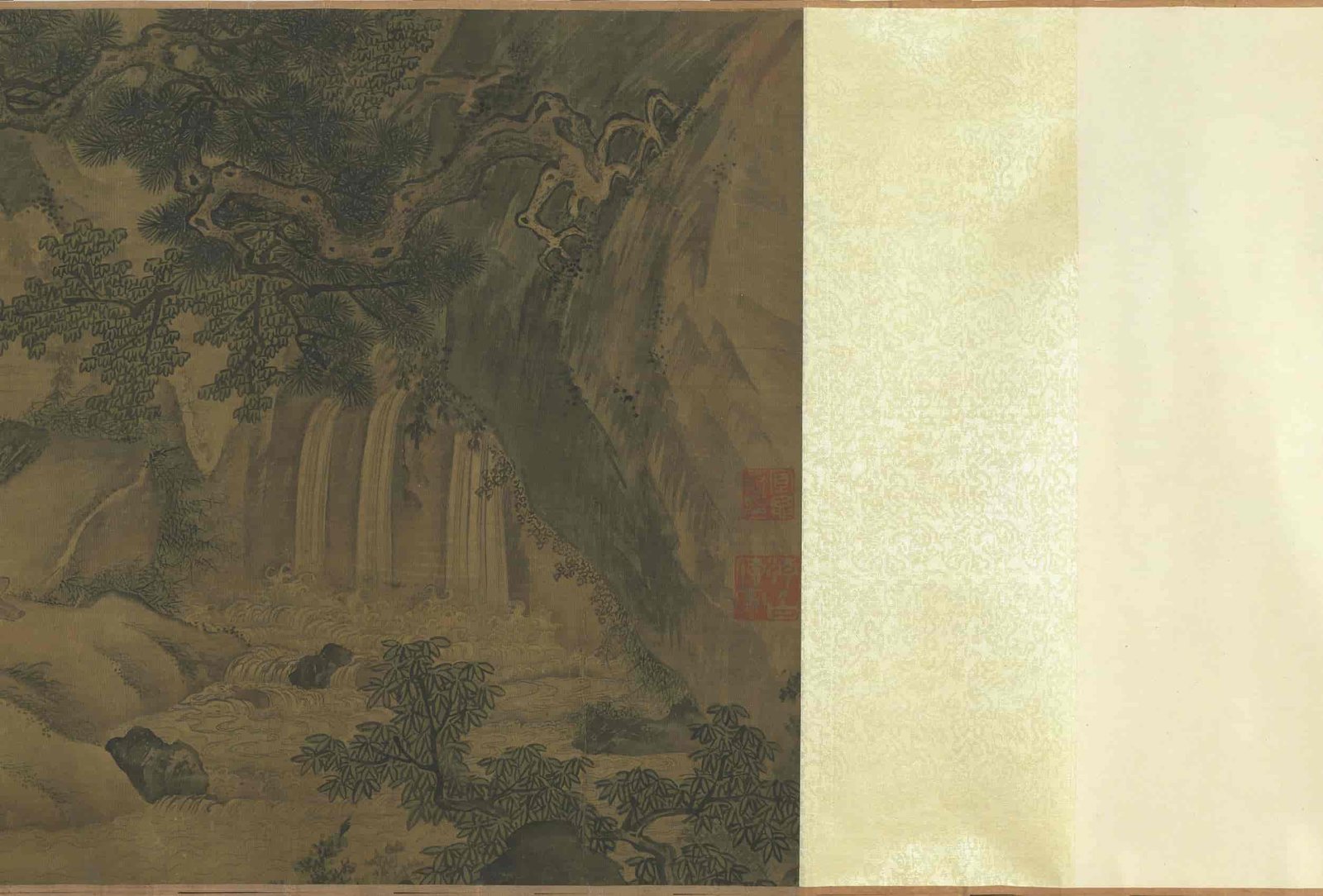
评价
目前还没有评价